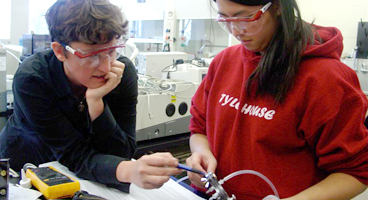Is the Pressure Difference Between the Oval and Round Windows the Effective Acoustic Stimulus for the Cochlea?
Archived as published.
Abstract
The assumption that the pressure difference between the cochlear windows is the stimulus that produces cochlear responses is tested experimentally in the ears of anesthetized cats. Cochlear potential is used as a measure of cochlear response. The sound pressures at the oval and round windows are individually controlled with both pressures at the same frequency and amplitude. When the angle difference between the two pressures is varied over one cycle, cochlear-potential magnitude varies by about 40 dB, with a sharp minimum occurring with the angle difference near zero. A linear model of the response to the two input pressures estimates a complex common-mode gain C and a complex difference-mode gain D; |D| is about 35 dB greater than |C| over the frequency range that was tested (75 to 1000 Hz). Thus, except for conditions that make the common-mode input much larger than the difference- mode input, the pressure difference between the oval and round windows is, to a good approximation, the effective acoustic stimulus for the cochlea.

